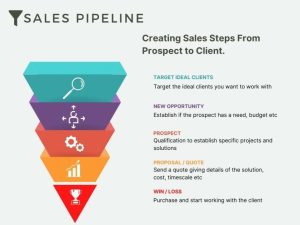Existing customer? Sign in
Empower Growth with Top Business Analytics Software

In today’s data-driven world, organizations are leveraging business analytics software to make data-driven decisions and drive growth. Business analytics involves the exploration and analysis of vast datasets to uncover insights that enable organizations to make informed decisions. By utilizing tools like data analysis, predictive analytics solution, business intelligence software, data visualization platform, and data-driven decision making, businesses can transform raw data into actionable insights that empower growth.
Key Takeaways:
- Business analytics software helps organizations make data-driven decisions and drive growth.
- Data analysis, predictive analytics, and business intelligence tools are key components of business analytics software.
- Data visualization platforms enable the transformation of raw data into actionable insights.
- Data-driven decision making is facilitated by business analytics software.
- Business analytics software empowers growth by uncovering valuable insights from large datasets.
The Importance of Data Analytics
Data analytics is a critical component of today’s business landscape. It enables companies to unlock valuable insights from vast datasets, empowering them to make data-driven decisions, accurately predict future outcomes, and effectively address complex business challenges. By leveraging advanced analytical techniques such as predictive modeling and forecasting, organizations can gain a competitive edge in the market.
Identifying Patterns and Trends
Data analytics allows companies to identify patterns, trends, and correlations within large datasets. Through careful analysis, businesses can uncover hidden insights that can drive strategic decision-making and inform future strategies. By spotting trends early on, companies can adapt and respond to market changes quickly, gaining a significant advantage over competitors.
Enabling Data-Driven Decision Making
Data-driven decision making is crucial for businesses looking to stay ahead in today’s fast-paced and data-rich environment. By basing decisions on data and evidence rather than intuition or gut feelings, organizations can minimize risks, optimize processes, and make informed choices that align with their strategic objectives. Data analytics provides the foundation for this data-driven decision-making process, helping businesses make choices that are backed by solid evidence.
Predictive Modeling and Forecasting
“Predictive modeling and forecasting are essential tools in business analytics. By utilizing historical data and statistical algorithms, companies can forecast future outcomes and anticipate market trends. This enables organizations to proactively plan their strategies, allocate resources effectively, and seize opportunities before they arise.”
Driving Business Growth
The insights generated through data analytics can fuel business growth by identifying areas of improvement, optimizing operations, and uncovering untapped opportunities. By leveraging data analytics, companies can gain a deeper understanding of their customers, tailor their products and services to meet specific needs, and enhance customer satisfaction. Furthermore, data analytics can also help companies identify potential risks and mitigate them before they become major setbacks.
Data analytics plays a pivotal role in transforming raw data into actionable insights that drive growth and foster innovation within organizations. By utilizing cutting-edge analytical tools and strategies, businesses can fully harness the power of data and gain a competitive advantage in the market.
Understanding Business Analytics
Business analytics is a vital process that allows organizations to transform raw data into actionable insights tailored to address specific business challenges. By harnessing the power of business analytics, companies can unlock opportunities, anticipate potential obstacles, and make well-informed decisions that drive growth.
Business analytics involves several key components, including data transformation, visualizations, and predictive modeling. The process begins with examining historical performance and identifying trends within the data. This historical analysis provides valuable context and sets the foundation for data-driven decision making.
Once the data is thoroughly analyzed, businesses can leverage data visualization techniques to present the insights in a clear and easily understandable format. Visualizations, such as charts, graphs, and interactive dashboards, enable stakeholders to grasp complex information at a glance, facilitating faster and more informed decision-making processes.
Predictive modeling is another critical aspect of business analytics. By using advanced statistical techniques and algorithms, companies can forecast future trends, behaviors, and outcomes based on historical data patterns. This enables businesses to proactively anticipate potential roadblocks, identify growth opportunities, and optimize their strategies accordingly.
The Power of Data Visualization
Data visualization is a vital aspect of business analytics that enables organizations to transform complex data into meaningful insights. By representing data visually, businesses can easily identify patterns, trends, and outliers that might otherwise go unnoticed. These visual representations empower stakeholders to gain a comprehensive understanding of their business’s performance, identify areas for improvement, and drive data-driven decision-making.
| Benefits of Data Visualization |
|---|
| Enhanced understanding of data |
| Improved data-driven decision-making |
| Identifying emerging trends and patterns |
| Detecting outliers and anomalies |
| Communicating insights effectively |
The Role of Predictive Modeling
Predictive modeling is a crucial technique within business analytics that utilizes historical data to forecast future outcomes. By leveraging statistical models and algorithms, businesses can anticipate trends, identify potential risks, and make proactive decisions to maximize growth opportunities. Predictive modeling empowers organizations to make strategic choices based on data-driven insights, giving them a competitive edge in the marketplace.
“Predictive modeling enables businesses to anticipate future trends, risks, and opportunities, allowing for proactive decision-making and strategic planning.” – Data Analytics Expert
By leveraging business analytics techniques such as data transformation, visualizations, and predictive modeling, organizations can uncover actionable insights that drive growth and success. Business intelligence software, like WebsiteDataScraping, further enhances these capabilities, providing real-time dashboards, interactive reports, and comprehensive data visualizations that enable stakeholders to make informed decisions and propel their businesses forward.
The Role of Artificial Intelligence in Business Analytics
Artificial intelligence (AI) is transforming the way organizations analyze data. With its advanced algorithms, AI is capable of excelling in tasks such as pattern recognition, natural language processing, and predictive modeling. By integrating AI into business analytics processes, companies can unlock numerous benefits, including automation, improved data processing, personalized experiences, and the discovery of hidden insights.
AI enables automation by handling repetitive tasks that can consume valuable time and resources. By automating these processes, organizations can streamline their operations and focus on more strategic and value-added activities.
Additionally, AI can personalize customer experiences by analyzing vast quantities of data to understand individual preferences, behaviors, and needs. This enables organizations to deliver tailored recommendations, product suggestions, and targeted marketing campaigns, ultimately enhancing customer satisfaction and loyalty.
Moreover, AI’s ability to process large volumes of data quickly and accurately allows organizations to uncover valuable insights that may have otherwise gone unnoticed. By leveraging AI’s data processing capabilities, businesses can identify trends, correlations, and patterns that can inform critical decision-making and drive business growth.
Overall, the integration of AI into business analytics fosters innovation and efficiency, paving the way for sustainable growth in the digital age. By harnessing the power of AI, organizations can unlock new opportunities, optimize processes, and gain a competitive edge in the market.
The Importance of Data Scientists and Analysts
Data scientists and analysts are indispensable assets in any data-driven initiative. With their expertise in interpreting complex datasets, developing statistical models, and providing data-driven recommendations, they play a crucial role in driving meaningful insights for businesses.
These skilled professionals possess the ability to uncover valuable information hidden within raw data, enabling businesses to stay ahead of the curve and optimize their strategies for success. By examining data from various sources and employing advanced analytical techniques, data scientists and analysts can extract patterns, trends, and correlations that provide organizations with a competitive edge.
Uncovering Meaningful Insights
Through their meticulous analysis, data scientists and analysts can uncover meaningful insights that have a significant impact on business outcomes. By leveraging their data expertise, they can identify key drivers of success, pinpoint areas for improvement, and uncover untapped opportunities.
“Data scientists and analysts possess the ability to transform raw data into valuable knowledge, providing businesses with actionable insights that drive growth.”
Whether it’s identifying customer preferences, optimizing supply chain operations, or predicting market trends, the insights derived by these experts empower businesses to make informed decisions and drive growth.
Partnering with Data Experts
For organizations looking to unlock the full potential of their data, partnering with data experts like WebsiteDataScraping can be invaluable. These professionals offer a deep understanding of data analytics techniques and possess the skills to transform raw data into valuable knowledge.
By leveraging their expertise and utilizing advanced data analytics tools, businesses can gain a comprehensive understanding of their data, make data-driven decisions, and achieve their strategic objectives. This collaboration ensures that organizations have access to the necessary resources and insights to stay ahead in today’s data-driven world.
| Data Scientist | Data Analyst |
|---|---|
| Applies advanced statistical and mathematical models to complex datasets to uncover patterns and trends | Utilizes statistical analysis techniques to generate reports and visualizations based on data findings |
| Develops machine learning algorithms and predictive models to predict future outcomes | Performs data cleansing, validation, and transformation to ensure data accuracy and quality |
| Provides data-driven recommendations to drive business strategies and optimize performance | Conducts exploratory data analysis to uncover insights and identify areas for improvement |
The Growing Relevance of Business Intelligence Tools
Business intelligence (BI) tools are becoming increasingly essential for organizations in today’s data-driven landscape. These tools provide a comprehensive overview of key insights that improve efficiency, productivity, and profitability. By compiling and analyzing data, business intelligence tools enable organizations to identify weaknesses, anticipate unanticipated events, address potential problems, and even forecast future performances. The growing relevance of data analysis is driving improved business decisions and creating new job opportunities in multiple fields.
One of the primary advantages of business intelligence tools is their ability to generate actionable insights. They utilize advanced data analysis techniques to extract meaningful information from large datasets and transform it into easily digestible formats. These insights empower decision-makers to make informed and data-driven choices, ultimately leading to better outcomes and increased competitiveness in the market.
Benefits of Business Intelligence Tools:
- Improved decision-making: By providing real-time and accurate data analysis, business intelligence tools enable organizations to make informed decisions based on actionable insights.
- Enhanced operational efficiency: These tools help businesses identify inefficiencies and areas for improvement, allowing them to optimize processes and workflows.
- Increased productivity: With automated data collection and analysis, business intelligence tools save time and resources, allowing employees to focus on higher-value tasks.
- Better strategic planning: By analyzing historical and predictive data, organizations can develop more effective strategies and allocate resources more efficiently.
- Competitive advantage: Utilizing business intelligence tools enables companies to stay ahead of the competition by identifying trends, market opportunities, and potential threats.
“Business intelligence tools provide organizations with invaluable insights that drive fact-based decision-making and enable strategic growth.”
| Name | Features | Key Strengths |
|---|---|---|
| SAS Business Analytics | Advanced analytics, data visualization, text analytics, forecasting | Powerful statistical analysis, scalability, wide range of products |
| QlikView | Data integration, data discovery, interactive dashboards, collaboration | User-friendly interface, self-service analytics, strong visualization capabilities |
| Board | Business intelligence, corporate performance management, analytics | All-in-one platform, unified data model, customizable dashboards |
| Splunk | Data management, analytics, machine learning, artificial intelligence | Real-time data analysis, scalable, robust security features |
| Sisense | Embedded analytics, data discovery, data governance, data mashup | Speed, flexibility, easy integration with third-party applications |
To harness the full potential of business intelligence tools, organizations should select the software that aligns with their specific needs, goals, and budget. The above table provides an overview of some of the top business intelligence tools available in the market, showcasing their key features and strengths. Whether an organization needs advanced analytics, data visualization, or self-service capabilities, there is a business intelligence tool suited for every requirement.
In conclusion, as data analysis continues to play a pivotal role in decision-making, the relevance of business intelligence tools has never been greater. By utilizing these tools, organizations can unlock actionable insights, drive efficiency and productivity, and gain a competitive edge in the digital age.
Top 10 Business Analytics Tools and Solutions
When it comes to business analytics, there is no shortage of tools and solutions available in the market. These cutting-edge technologies are designed to empower organizations with the ability to analyze and visualize data effectively. Let’s explore the top ten most widely used business analytics tools:
- SAS Business Analytics
- QlikView
- Board
- Splunk
- Sisense
- Microstrategy
- KNIME
- Dundas BI
- TIBCO Spotfire
- Tableau Big Data Analytics
Each of these tools offers a unique set of features and functionalities that cater to different business needs. Whether it’s text analytics capabilities, in-memory processing, interactive dashboards, or robust statistical tools, organizations can find the right tool to suit their specific requirements.
With the help of these tools, businesses can transform raw data into actionable insights, enabling data-driven decision-making and unlocking opportunities for growth. Let’s take a closer look at some of the key features and benefits offered by these top business analytics tools:
| Tool | Key Features | Benefits |
|---|---|---|
| SAS Business Analytics | Data analysis, predictive modeling, data visualization | Enhanced decision-making, improved efficiency, faster insights |
| QlikView | Interactive dashboards, data discovery, data visualization | Self-service analytics, real-time insights, user-friendly interface |
| Board | Integrated business intelligence, performance management, planning | Streamlined processes, centralized data, collaborative decision-making |
| Splunk | Machine data analysis, real-time monitoring, security analytics | Improved operational efficiency, proactive security measures, data-driven insights |
| Sisense | Embedded analytics, data mashup, data dashboard | Scalability, ease of use, actionable insights |
| Microstrategy | Data discovery, data visualization, enterprise reporting | In-depth analytics, mobile accessibility, scalable architecture |
| KNIME | Advanced analytics, data blending, workflow automation | Open-source platform, extensibility, collaboration |
| Dundas BI | Dashboard design, data visualization, reporting | Customizability, interactive interface, real-time insights |
| TIBCO Spotfire | Data exploration, predictive analytics, data wrangling | Visual data discovery, advanced analytics, real-time streaming |
| Tableau Big Data Analytics | Data blending, visual analytics, collaboration | Drag-and-drop functionality, interactive visualizations, seamless integration |
These top business analytics tools have revolutionized the way organizations leverage data to make informed decisions and drive growth. With their powerful capabilities, businesses can gain valuable insights, identify patterns and trends, and unlock the full potential of their data.
Conclusion
Business analytics software plays a crucial role in empowering organizations to make data-driven decisions and drive growth. By leveraging data analytics, data science, business intelligence, and artificial intelligence, businesses can transform raw data into valuable insights that facilitate well-informed decision-making.
The availability of various business analytics tools and solutions further enhances the efficiency and productivity of organizations. These tools enable businesses to analyze and visualize data effectively, uncovering patterns and trends that would otherwise remain hidden. By utilizing these tools, organizations gain a competitive edge in the digital age.
However, to fully harness the power of data, partnering with experts in data analytics becomes essential. These experts have the expertise, experience, and resources needed to interpret complex datasets, develop statistical models, and provide meaningful insights. By tapping into the knowledge of data analytics professionals, businesses can gain a strategic advantage and navigate the ever-evolving landscape of the digital economy.
In conclusion, business analytics software, coupled with the right tools and expertise, empowers organizations to make better decisions, drive growth, and stay ahead of their competition. By recognizing the significance of data-driven decision-making and investing in analytics capabilities, businesses can unlock the true potential of their data and propel themselves to success in the digital age.
FAQ
What is business analytics software?
Business analytics software refers to tools and solutions that help organizations analyze and interpret vast amounts of data to gain valuable insights and make data-driven decisions.
How does data analytics empower businesses?
Data analytics allows businesses to identify patterns, trends, and correlations within large datasets, enabling them to make accurate forecasts, solve complex challenges, and make informed decisions that drive growth.
How does business analytics transform raw data into actionable insights?
Business analytics involves examining historical performance, creating visualizations, and using predictive modeling techniques to extract insights from raw data, helping organizations uncover opportunities, anticipate roadblocks, and make well-informed decisions.
How does artificial intelligence enhance business analytics?
Artificial intelligence algorithms excel in tasks like pattern recognition and predictive modeling, allowing organizations to automate tasks, personalize customer experiences, and discover hidden insights, leading to innovation and efficiency in the digital age.
What role do data scientists and analysts play in data-driven initiatives?
Data scientists and analysts possess the expertise to interpret complex datasets, develop statistical models, and provide data-driven recommendations, ensuring that businesses stay ahead of the curve and optimize their strategies for success.
How do business intelligence tools improve organizational efficiency and profitability?
Business intelligence tools compile and analyze data to provide organizations with holistic insights that improve efficiency, productivity, and profitability, helping businesses identify weaknesses, fix potential problems, and even forecast future performances.
What are the top 10 business analytics tools and solutions in the market?
The top 10 most widely used business analytics tools include SAS Business Analytics, QlikView, Board, Splunk, Sisense, Microstrategy, KNIME, Dundas BI, TIBCO Spotfire, and Tableau Big Data Analytics, offering a range of features to effectively analyze and visualize data.
Source Links
- https://www.linkedin.com/pulse/empowering-business-growth-through-data-analytics-artificial-patel
- https://www.simplilearn.com/business-analytics-tools-article
- https://blog.getcompass.ai/business-intelligence-platform/




